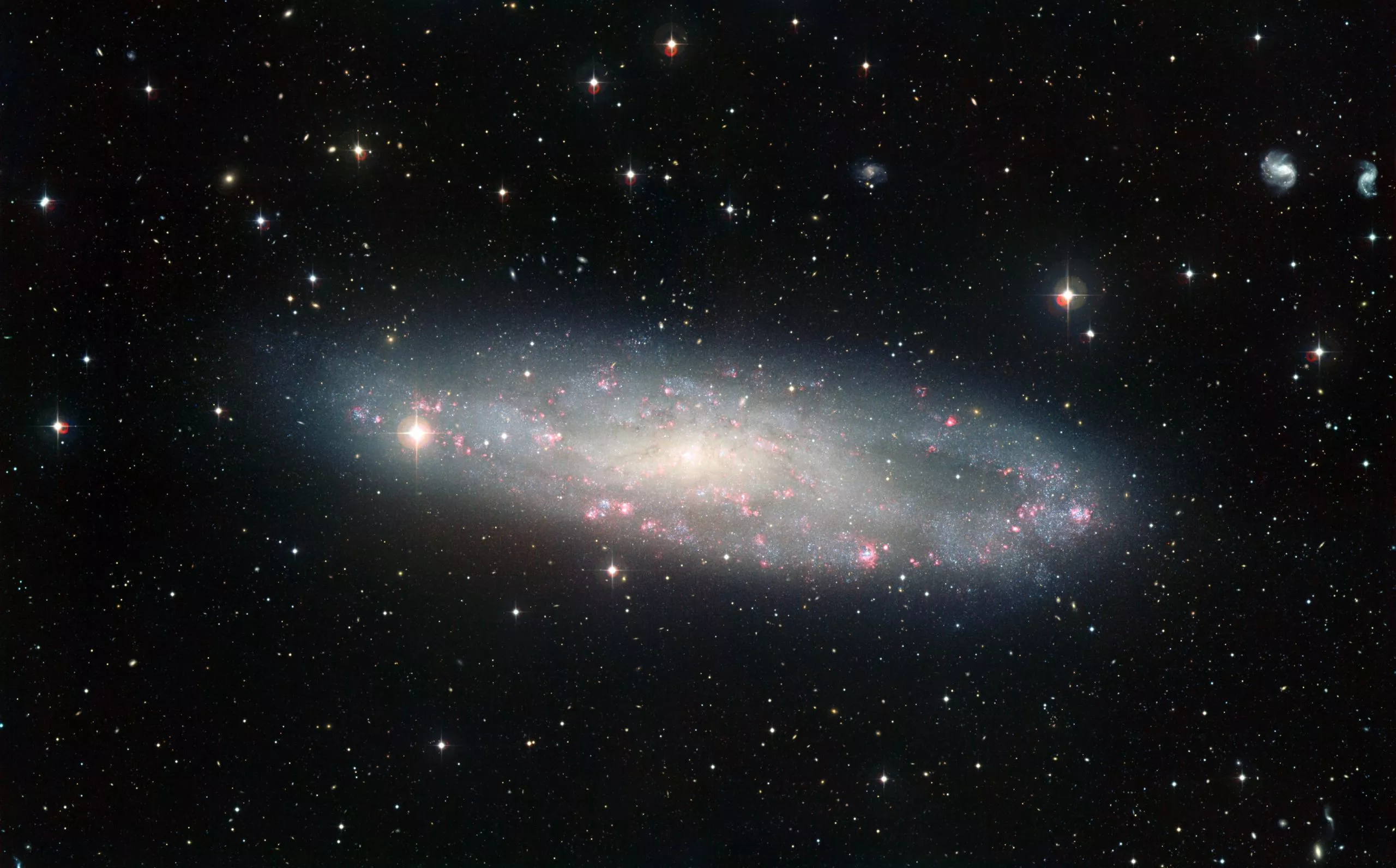This image from NASA's Hubble Space Telescope shows a part of a spiral galaxy called pinhole - a proper name for a small spiral galaxy. Pinhole galaxies, also known as NGC 247 and Caldwell 62 (Caldwell 62), are located in the sculptor Galaxy Group about 11 million light-years away, which is the closest to our earth.
The galaxy is nicknamed because it has a strange hole at one end (not seen in this Hubble close-up, but seen in the wide field image from the European Space Agency's La Silla Observatory below).

This Hubble image zooms to the edge of the galaxy, on the other side of the hole. Below the edge of the galactic disk, smaller and farther galaxies can be seen, as well as a very bright foreground star between us and NGC 247. Bright red indicates areas of dense gas and dust, as well as active star formation near the edges of galaxies.

This image of spiral galaxy NGC 247 was taken by ESO's wide field imager (WFI) at La Silla Observatory in Chile. NGC 247 is believed to be located in the constellation Cetus, 11 million light-years away. It is one of the closest galaxies to the Milky way.
The cavity on the side of Caldwell 62 is a puzzling mystery. That part lacks gas, which means that there is not much material to form new stars. Since star formation in the region has stopped, the gap can only be filled with ancient and weak stars. Scientists still don't know how this strange feature is formed, but research shows that the gravitational interaction with another galaxy in the past may be the reason.
Caldwell 62 is also the site of an object called an ultra-optical X-ray source. Scientists have long debated the nature of these ultra bright X-ray sources. Are they stellar mass black holes swallowing an unusually large amount of gas? Or are they "medium mass" black holes that have long been looking for, tens of times more massive than their stellar black holes, but smaller than the giant black holes in the centers of most galaxies? Through various forms of research on NGC 247 (using Hubble's visible and infrared light and X-rays from the Chandra X-ray Observatory), astronomers found signs that the X-rays came from a disk around a medium mass black hole.